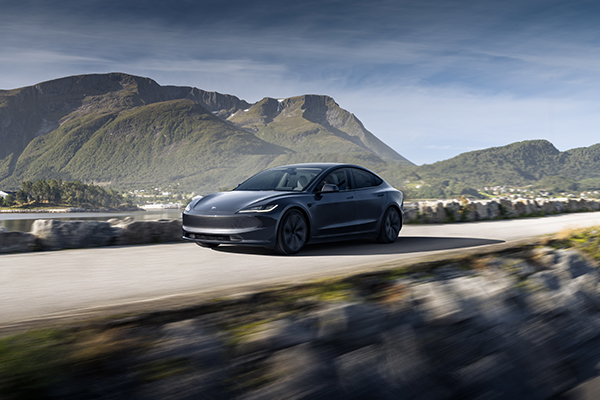BYD SEAL vs Tesla Model 3: which would you choose?
The BYD SEAL and the Tesla Model 3 go head-to-head.
Both vehicles offer impressive features, but how do they stack up against each other?
Let’s find out.

BYD SEAL vs Tesla Model 3 Design and dimensions
When it comes to design, the Tesla Model 3 recently received an upgrade which gave it a new look from the front and the back with new brake lights and a re-designed bumper.
You get 18-inch alloys or if you want to pay an extra £1,500, you’ll receive 19-inch alloy wheels. Colour wise, Pearl white is free, but if you want something a bit more interesting, you have to pay either £1,300 for Deep blue and Black, or £2,000 for the Stealth grey and Ultra red.
The BYD SEAL is very easy on the eye, you get lines down the sides, fins under the rear doors to go with the seal theme, 19-inch alloys come as standard, and if you’re looking for some stunning colours, the BYD SEAL has an assortment to choose from: Ice blue, Atlantis grey, Polar white, Space black or Shadow green and Indigo grey for an extra £900!
Both cars showcase sport sleek, aerodynamic designs, but there are some differences in their dimensions.
The BYD SEAL is slightly larger, measuring 4,800 mm in length, 1,875 mm in width, and 1,460 mm in height.
In comparison, the Tesla Model 3 is 4,724 mm long, 1,850 mm wide, and 1,431 mm tall.
This gives the BYD SEAL a bit more interior space, thanks to its longer wheelbase of 2,920 mm compared to the Model 3’s 2,875 mm.
Performance and Range
When it comes to range, both cars are impressive.
The Tesla Model 3 Performance variant boasts a higher WLTP range of 328 miles, while the BYD SEAL Excellence offers a range of 323 miles. If you opt for the standard BYD SEAL Design trim, range is better with 354 miles.
The Model 3’s superior range is attributed to its lower weight and Tesla’s efficient drivetrain technology.
In terms of acceleration, the Model 3 edges out the SEAL, offering quicker 0-60 mph times of 2.9 seconds compared to the SEAL’s 3.8 seconds.

Interior and Technology
Inside, the Tesla Model 3 continues its minimalist approach, with most controls integrated into a central 15.4-inch touchscreen.
The BYD SEAL, on the other hand, offers a more traditional setup with physical buttons and a 15.6-inch touchscreen that can rotate between horizontal and vertical orientations. You get a panoramic sunroof as standard.
This makes the SEAL’s interior feel more conventional, while the Model 3’s interior is more futuristic and streamlined.
Both the BYD SEAL and Tesla Model 3 are equipped with advanced safety features, making them highly competitive in the electric vehicle market.
The BYD SEAL boasts 9 airbags, Level 2 ADAS with features like automatic emergency braking and adaptive cruise control, a 360-degree camera, and electronic stability programs. It also includes hill descent control, hill-hold assist, and a tyre pressure monitoring system.
On the other hand, the Tesla Model 3 offers multiple airbags, a comprehensive ADAS suite with Autopilot, a 360-degree camera, and electronic stability control. Unique to Tesla are features like Sentry Mode for security and a cabin camera for driver attentiveness.
Both models have received an NCAP maximum 5-star safety rating.
Boot space
The Tesla Model 3 gets 594 litres of boot space, and the BYD SEAL loses here, only offering 400 litres of space.
Both cars offer frunks (front trunks), the BYD SEAL’s being 53 litres, and the Tesla Model 3’s being 88 litres which is quite a bit more space for your lunch, a few spare outfits, or your wellies.

Price
Price will be the real deal breaker here.
When comparing the prices of the BYD SEAL and the Tesla Model 3, the BYD SEAL starts at approximately £45,695 for the base model and goes up to £48,695 for the higher-end Excellence AWD trim.
In contrast, the Tesla Model 3 has a starting price of around £39,990 for the base model, with the Long Range version priced at £49,990 and the Performance model at £59,990.
Which price range fits your budget better?







